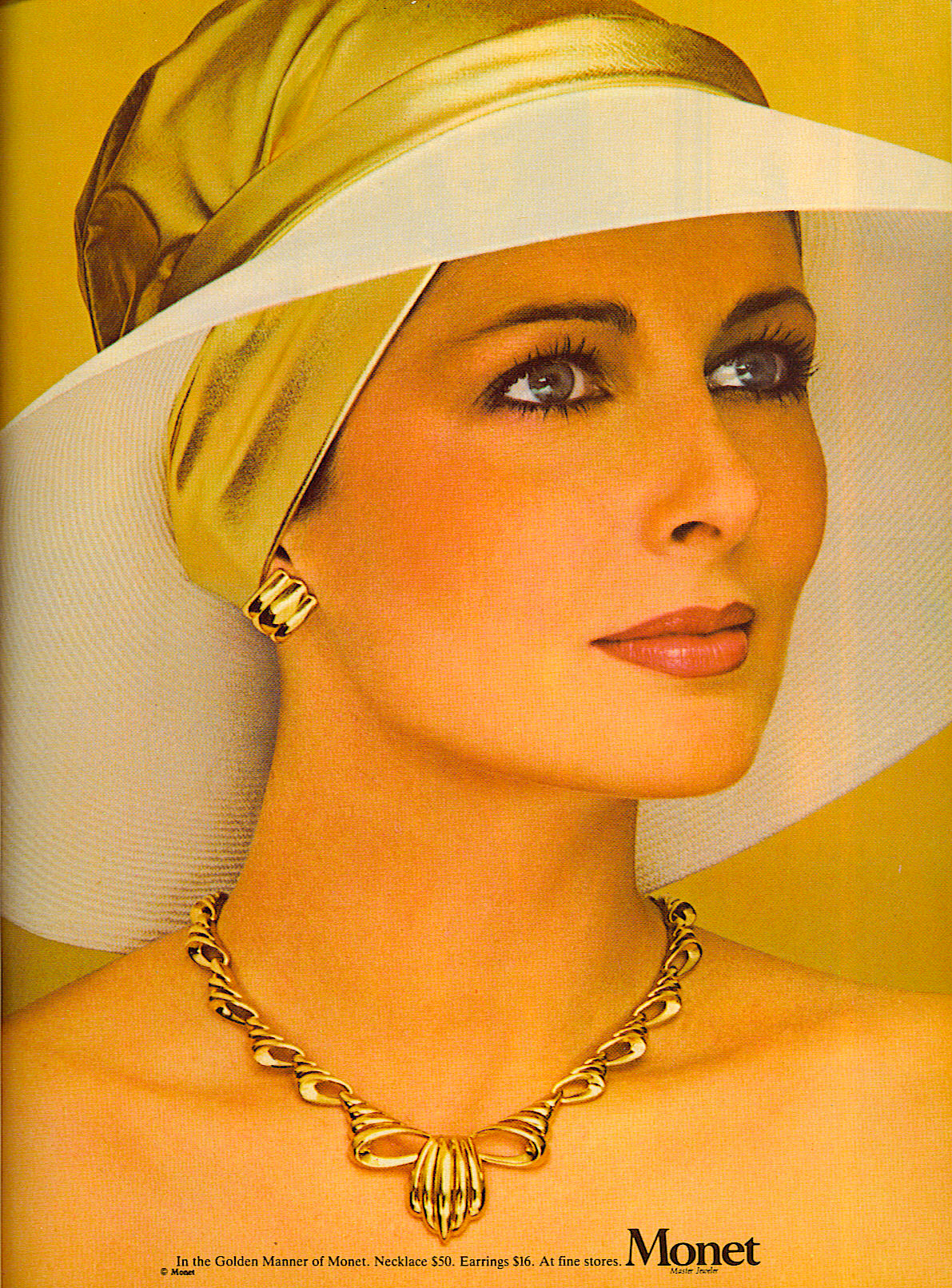Joseph Schubach Jewelers Blog » Jewelry History » Page 4
-
Over the years of writing about jewelry, one theme comes to mind: everything old is new again. From the ancient Egyptians to the Roaring 20’s to the turbulent 60’s, fashion trends come, go, then come again. Today, we highlight the bold, linear jewelry of the 60’s.







-
Choker necklaces have been around a long, long time. From the French Revolution to the most recent Fashion Week in Paris. This BuzzFeed article covers the entire span with some amazing images. Check it out!
1798: Political dress during the French Revolution.
During the French Revolution, women took to wearing red ribbons around their necks to pay homage to those who met their death at the guillotine. The ribbon could be worn around the neck, or another fashion came in the form of an X around the shoulders and back. (via)
1860s: The uniform of prostitutes.
Manet’s famous painting, “Olympia,” (1863) depicted a prostitute wearing a black ribbon around her neck. During this era, a ribbon around the neck could mean a woman was a prostitute.
1874: But ballerinas and fashionable ladies wore them too.
Some of history’s most famous chokers can be found in Degas’ ballerina paintings, of which he did many in the 1870s and 1880s.
Late 1800s: Royal trend
Alexandra, Princess of Wales, reportedly wore thick rows of pearls and velvet to cover a scar on her neck which made her self-conscious. She was influential in expanding the trend. (via)
Check out more choker necklaces throughout history.
-
When we think of tiaras (or diadems as they’re also known), we envision an ornate headpiece, laden with gems. But the earliest diadems were often as delicate as a wreath made of flowers. Read on:
The wearing of a diadem as a mark of nobility or royalty is an extremely ancient custom, and the forms which diadems have assumed are so diverse that it is very difficult to generalize about them or to trace a continuous line of development. The diadems of some of the Eastern Kings in ancient times were extremely ornate and heavy, while in classical times supreme power was often denoted in the simplest way – by a band of cloth worn round the head and tied in a knot behind. When Gibbon says of Diocletian that he “ventured to assume the diadem”, the diadem in question was only a fillet of white cloth set with pearls. Yet much richer head-dresses had been worn at an earlier date, notably by the Egyptians. Some of the diadems of the Egyptian princesses are amazingly delicate. One which belonged to the Princess Khnemt is made of delicate flowers in gold wire, inlaid with stones, and has all the fragility of a wreath made of real wild flowers.
The earliest diadems found in the Greek world are made of gold or silver sheet decorated with simple patterns of dots embossed from the back. In classical times the diadem of sheet gold decorated with embossed patterns was joined by the wreath. Extremely naturalistic imitations of wreaths of real leaves were made in gold, silver, and materials plated with gold, and were worn on ceremonial occasions.
Source: TiaraTown.com





-
A jewelry-loving friend had mentioned how she had recently seen To Catch a Thief and was just amazed by some of the jewelry in it. Not being so familiar with the movie, I figured I’d do my research and share some stunning stills. Click on the image to enlarge. (Fashion design by Edith Head.)




-
Over the years, we’ve written repeatedly about various periods of jewelry throughout history. One common theme? You can always see its influence in jewelry today. Edwardian jewelry is no different (with some beautiful examples below). So what defines the Edwardian period? According to Antique Jewelry University:
The last decade of the nineteenth century, the fin de siècle, was a time when the rejection of the machine-made jewelry that had once been welcomed as an innovation, caused an about face in fashion and design. Jewelry went from large and ostentatious to ethereal and delicate almost overnight. Employing what was to become known as the “garland” style or style guirlande, jewelers who chose not to embrace Art Nouveau or the Arts and Crafts movement borrowed the fluidity of their lines and incorporated them into more traditional motifs thereby creating Edwardian jewelry.
Here are a few examples:

Edwardian Bow Necklace

Edwardian Negligee

Edwardian Platinum Earrings

Edwardian Diamond Ring

Queen Consort Alexandra of Great Britain.
-

You may have never heard of Gustav Manz but you may have seen his work. Unfortunately, it was often behind the stamp of Cartier or Tiffany’s. But after decades, Gustav Manz is getting the recognition he’s due.
The jewelry maker Gustav Manz produced thousands of works in gold, silver and platinum, operating a Manhattan workshop from around 1901 to 1944. But his name shows up hardly anywhere.
He designed for higher-profile outfits including Tiffany & Company and Cartier, which put their own stamps on the precious metal. Only now are unmarked wares by Manz (pronounced Mahnz) finally receiving their due.
“Maybe he’s a little vindicated,” said Courtney Bowers, a historian who wrote her 2008 master’s thesis on Manz for a graduate program run by the Cooper-Hewitt museum and the Parsons school. During an interview at her family’s Manhattan jewelry workshop, she sported Manz gold rings with leaves engulfing turquoise and freshwater pearls.
Read more at New York Times.
Check out website dedicated to Gustav Manz and his work.

A garnet and opal bracelet by Gustav Manz and offered by Macklowe Gallery.


























